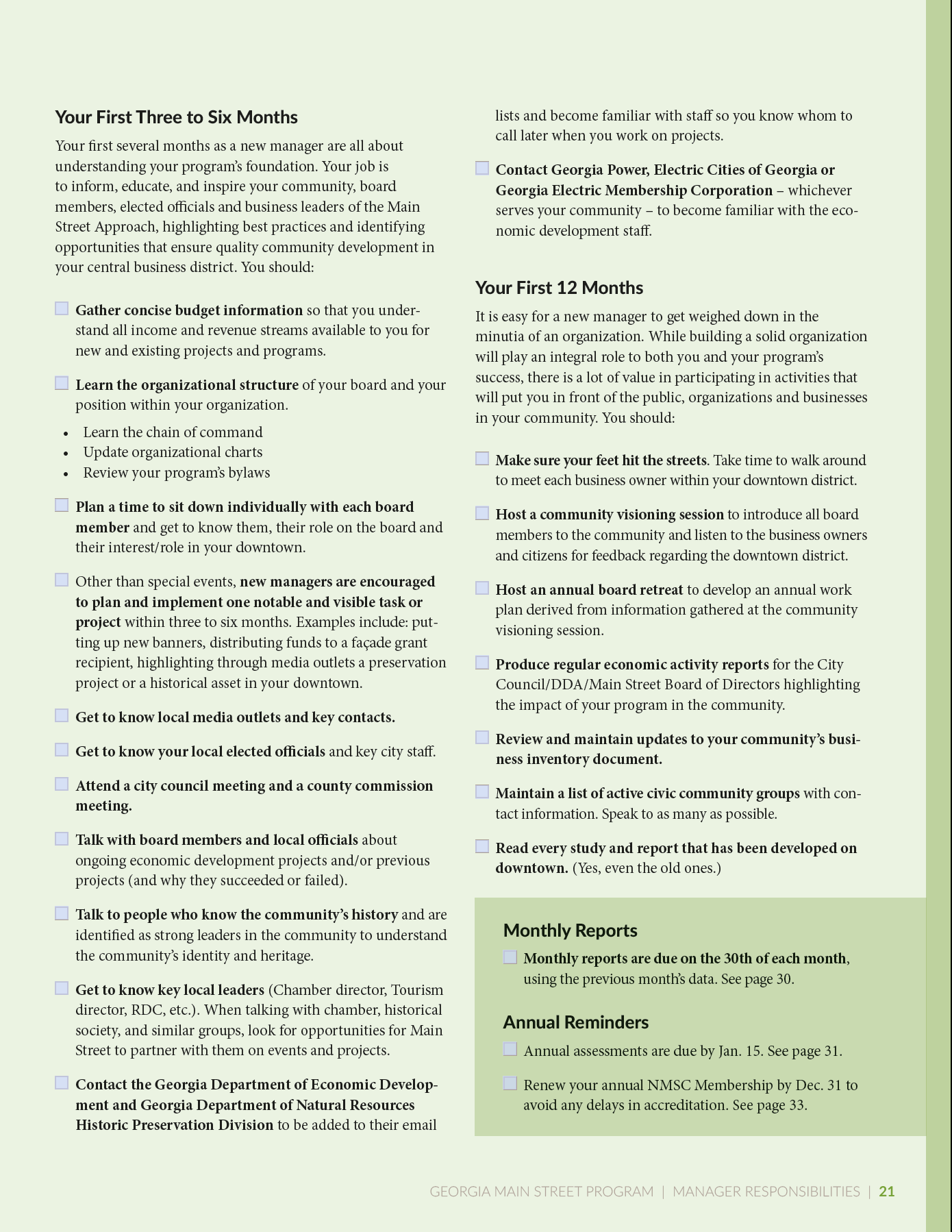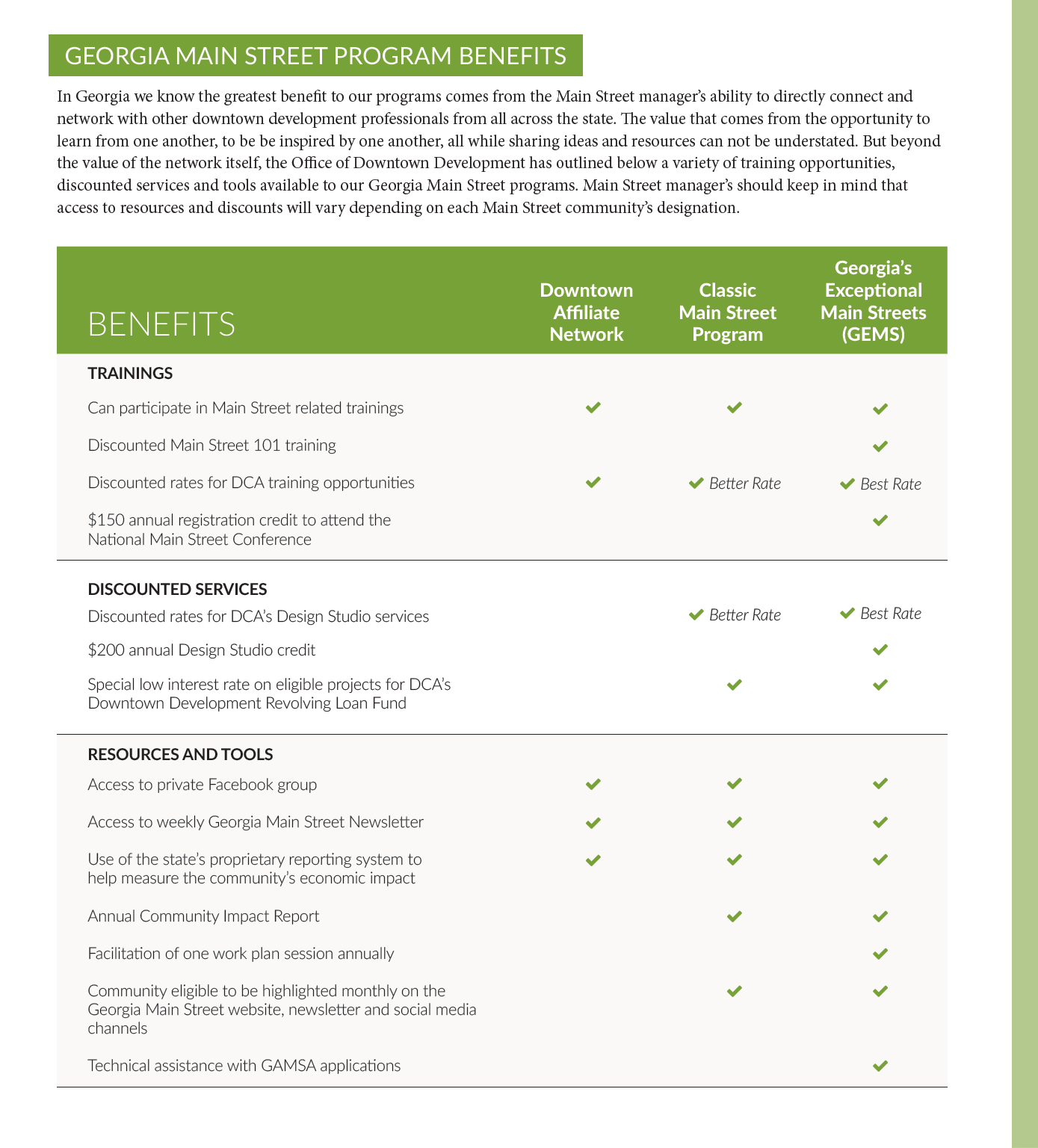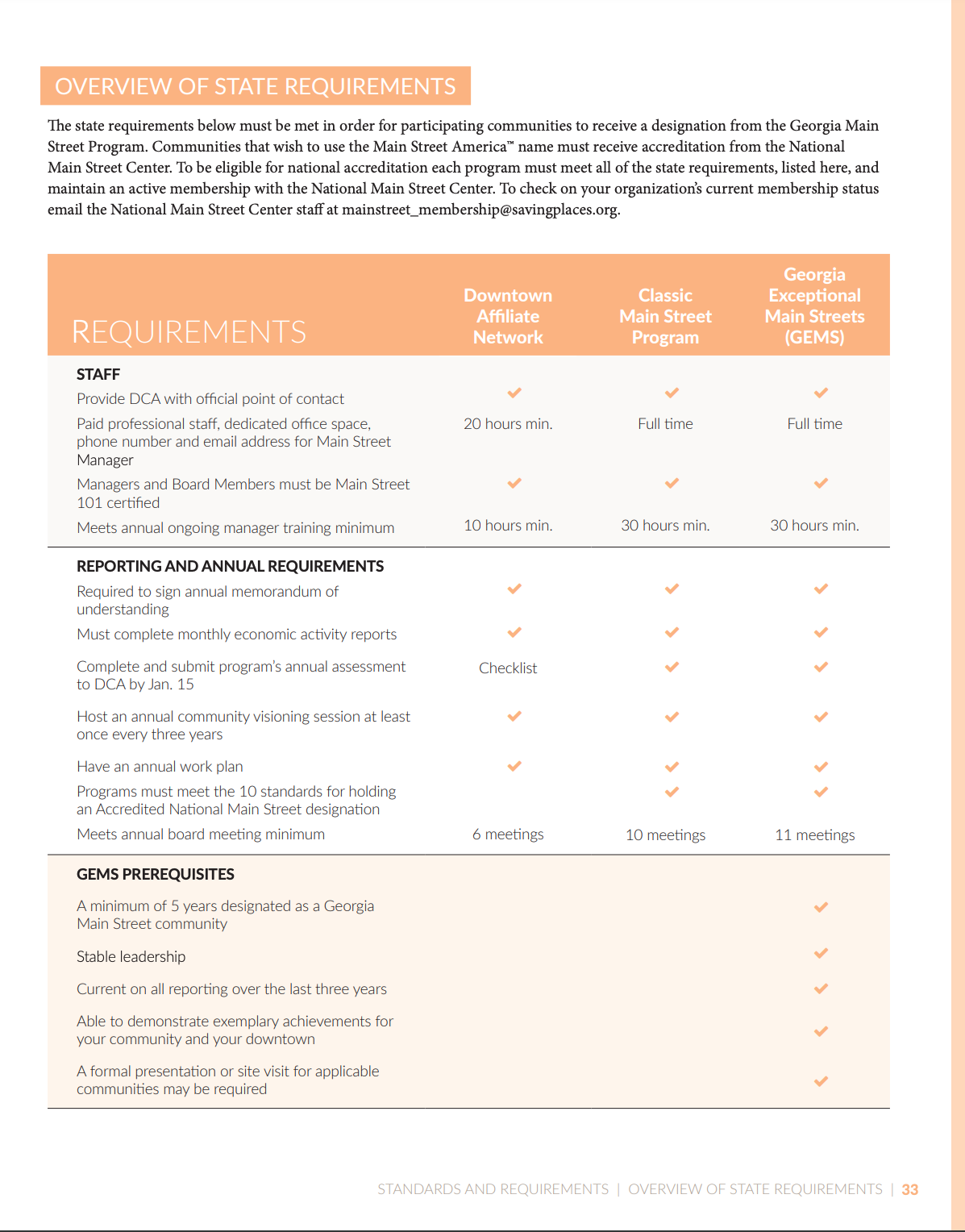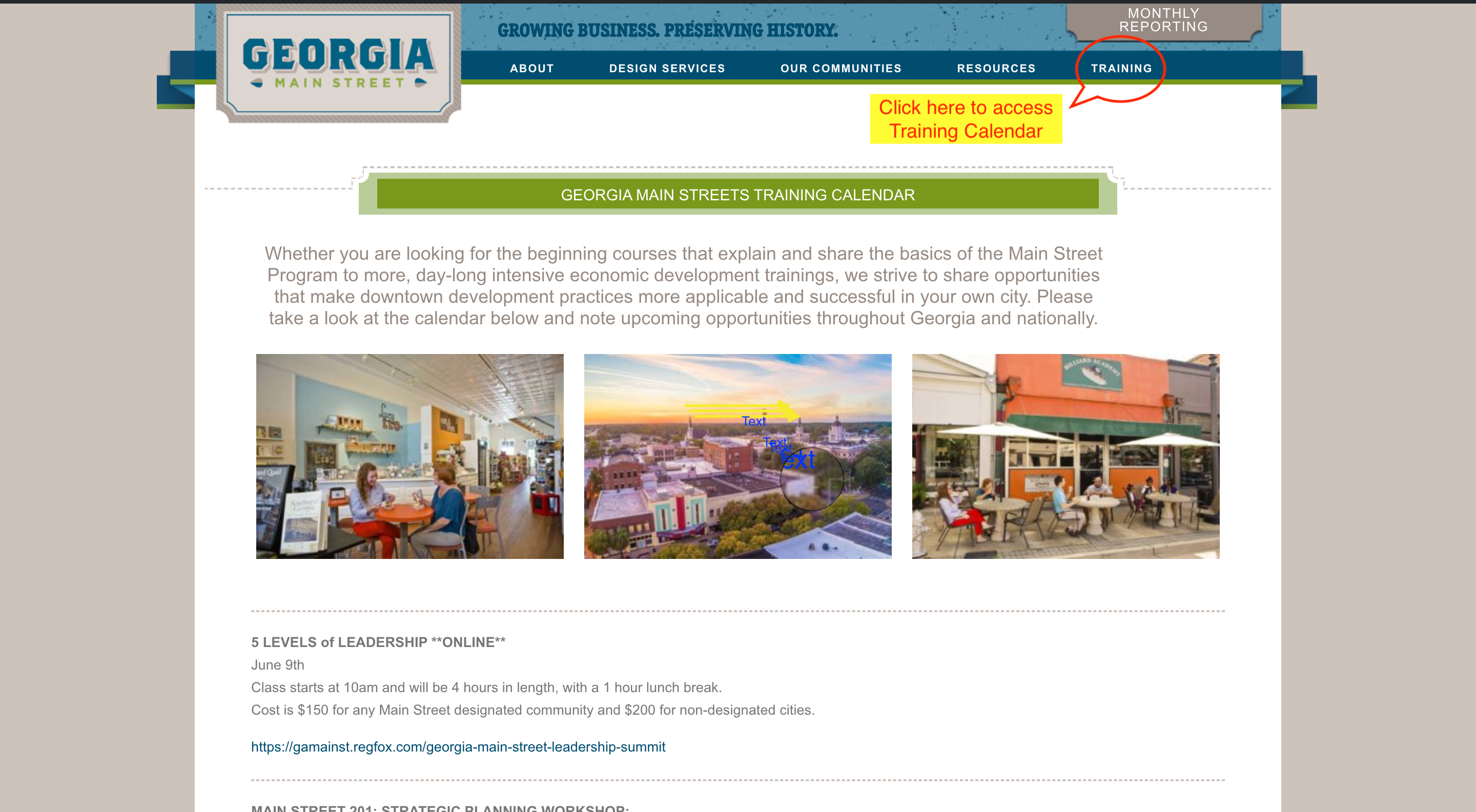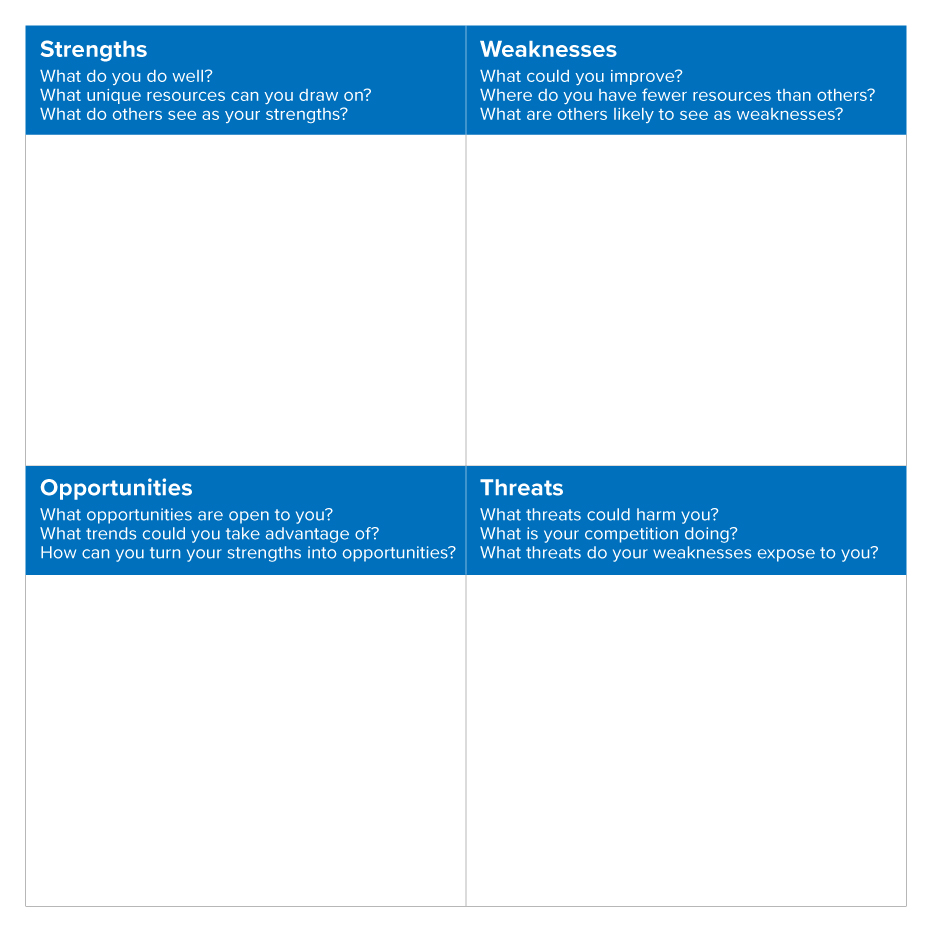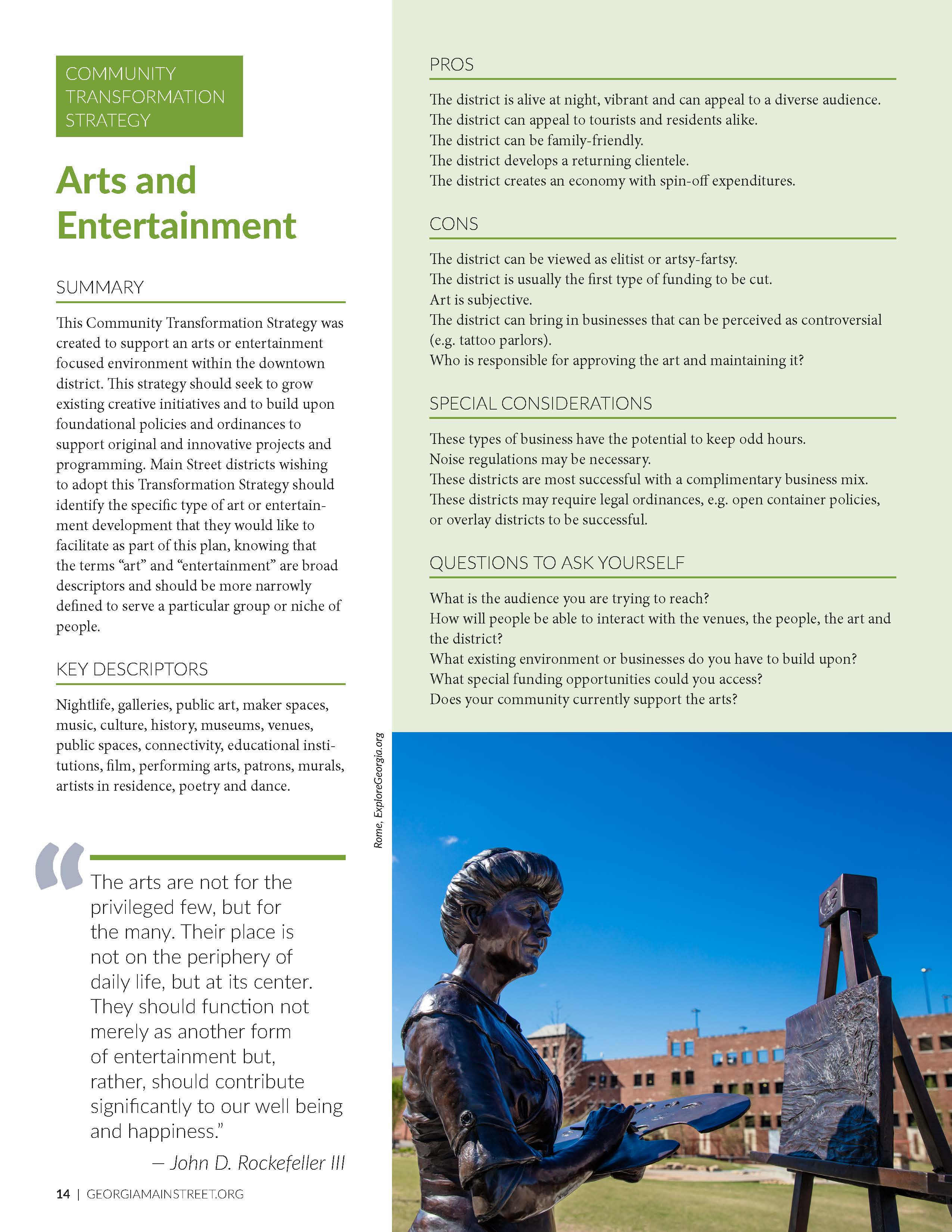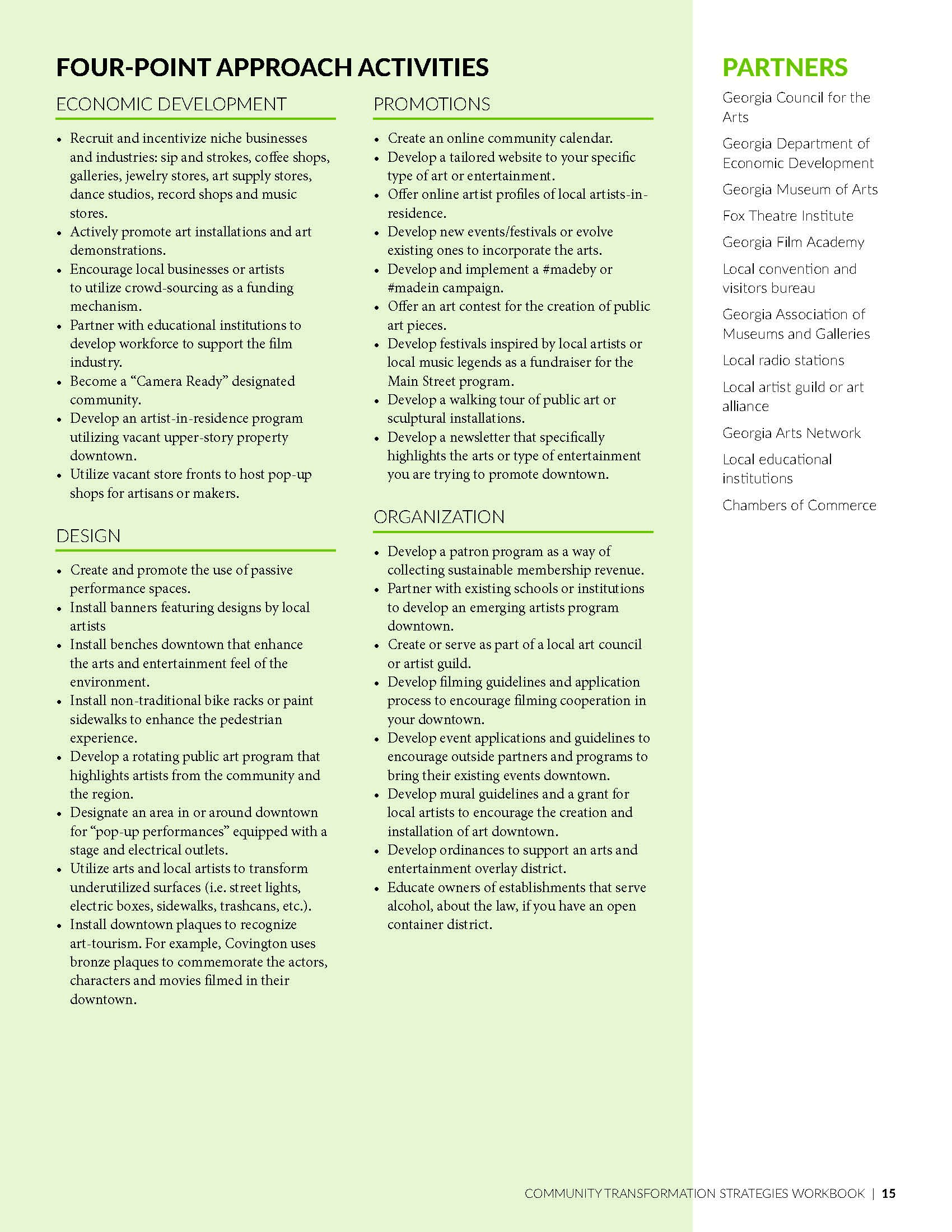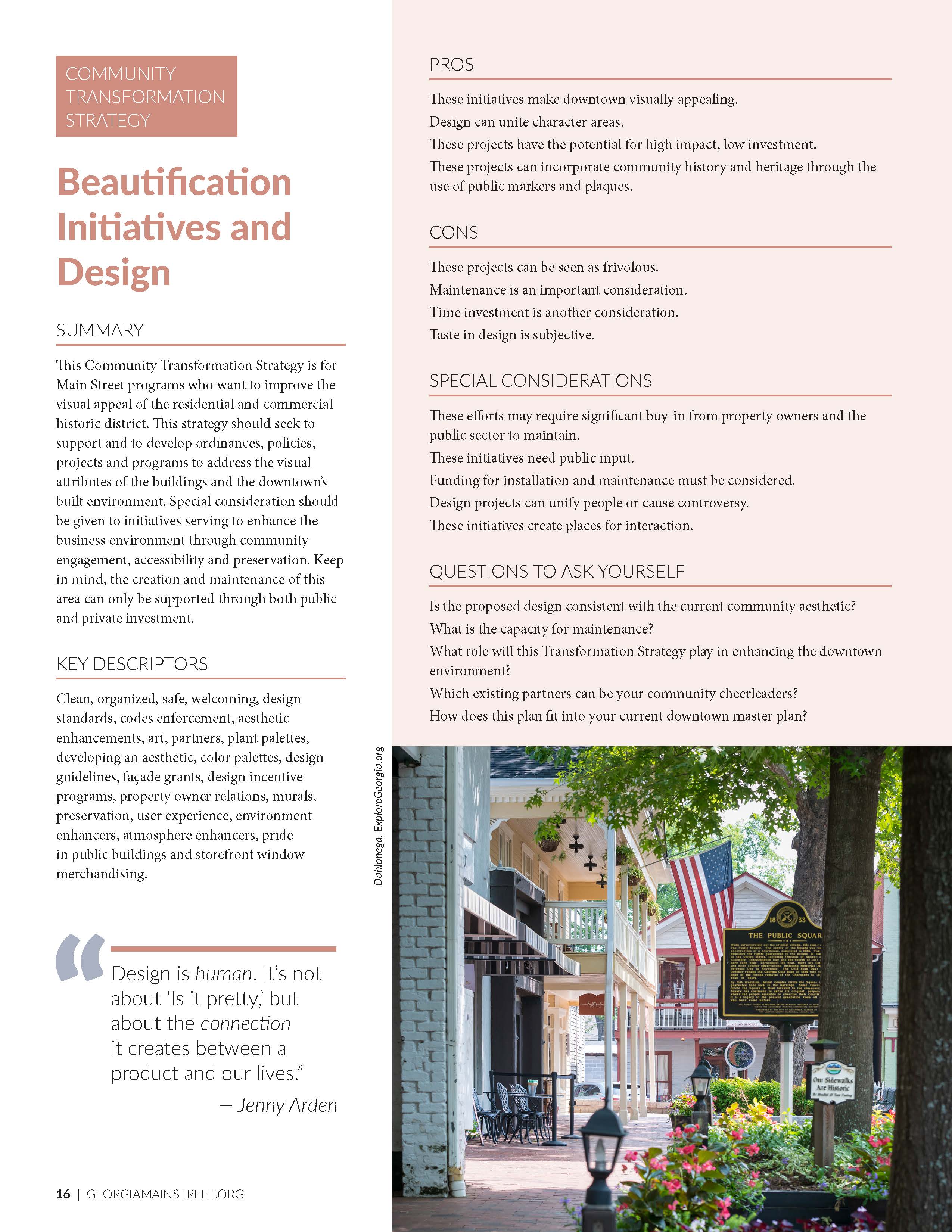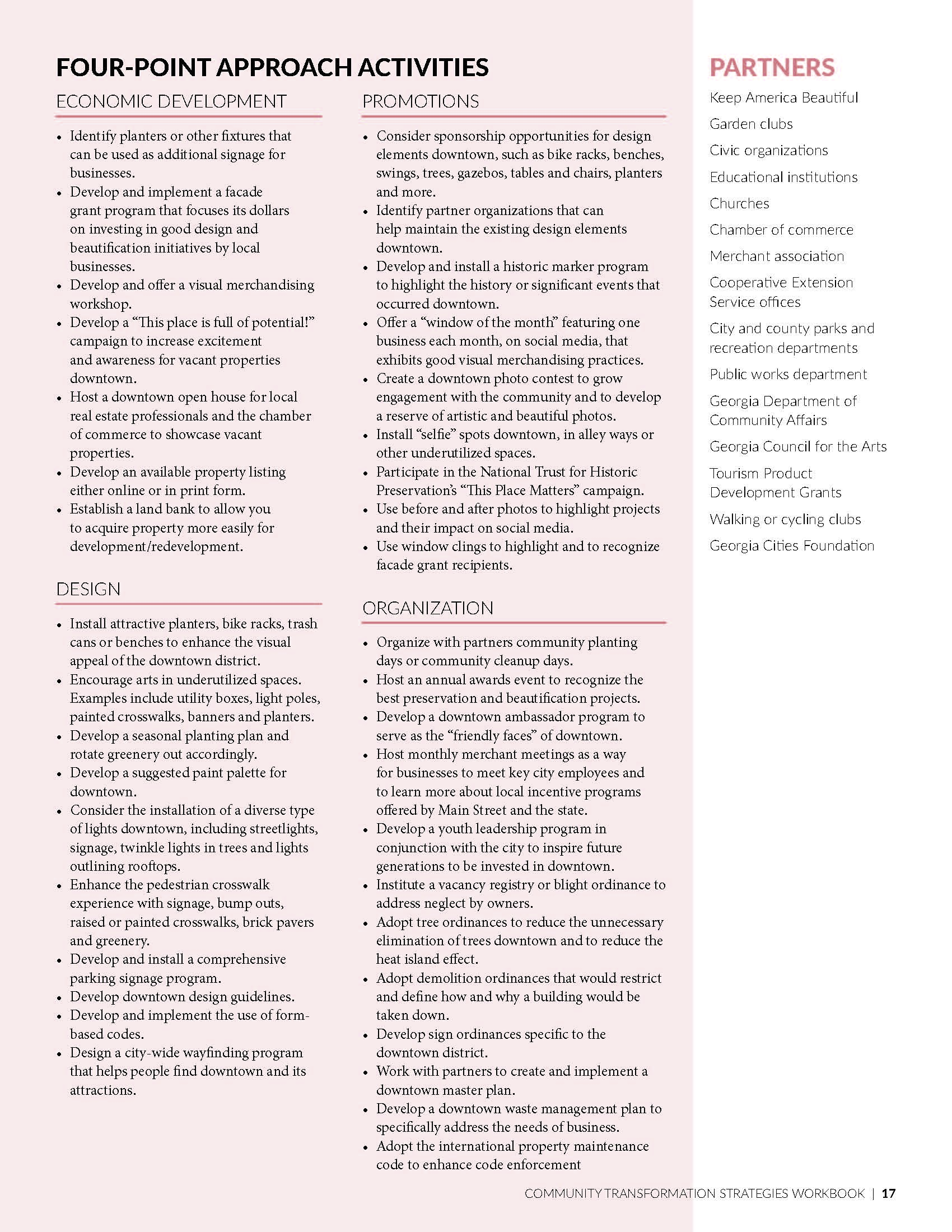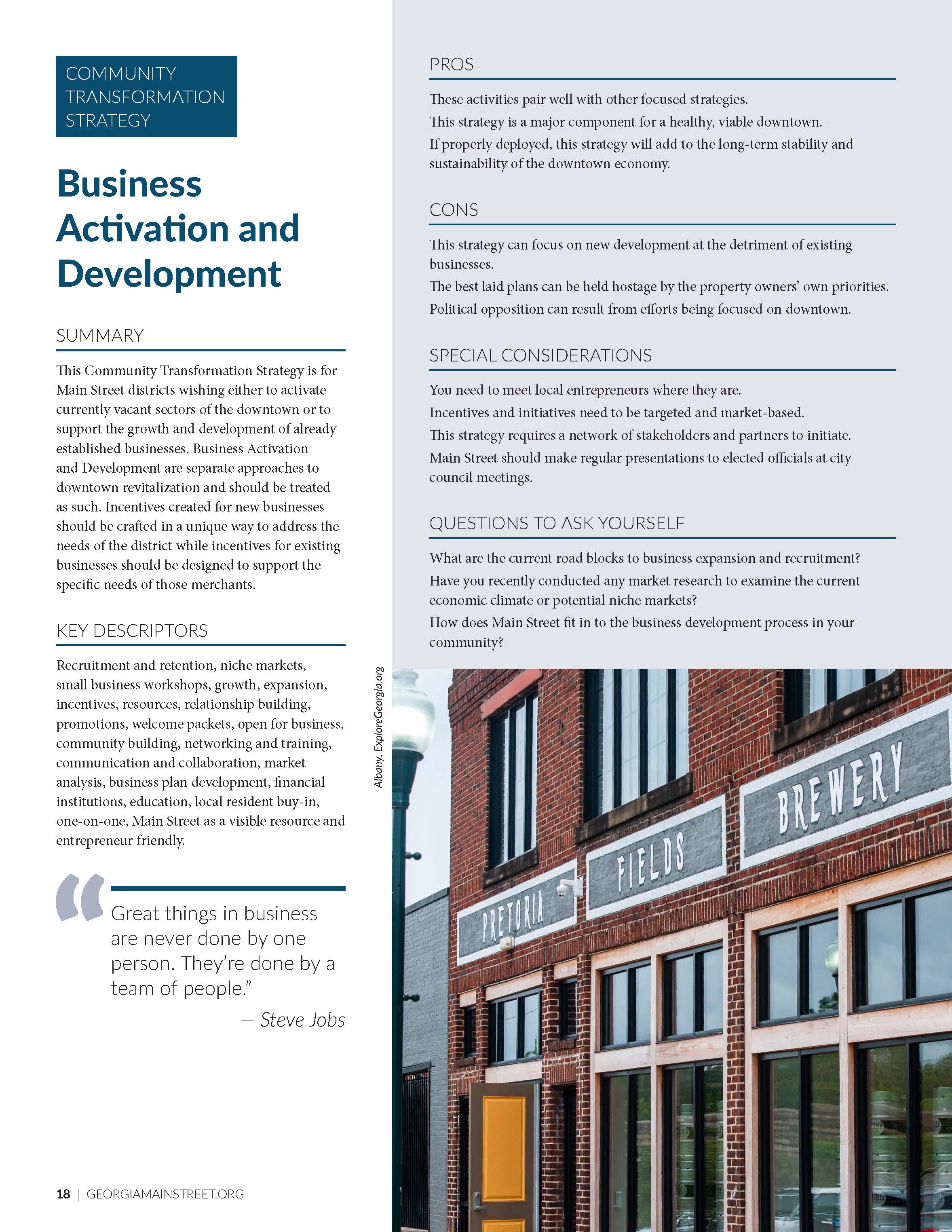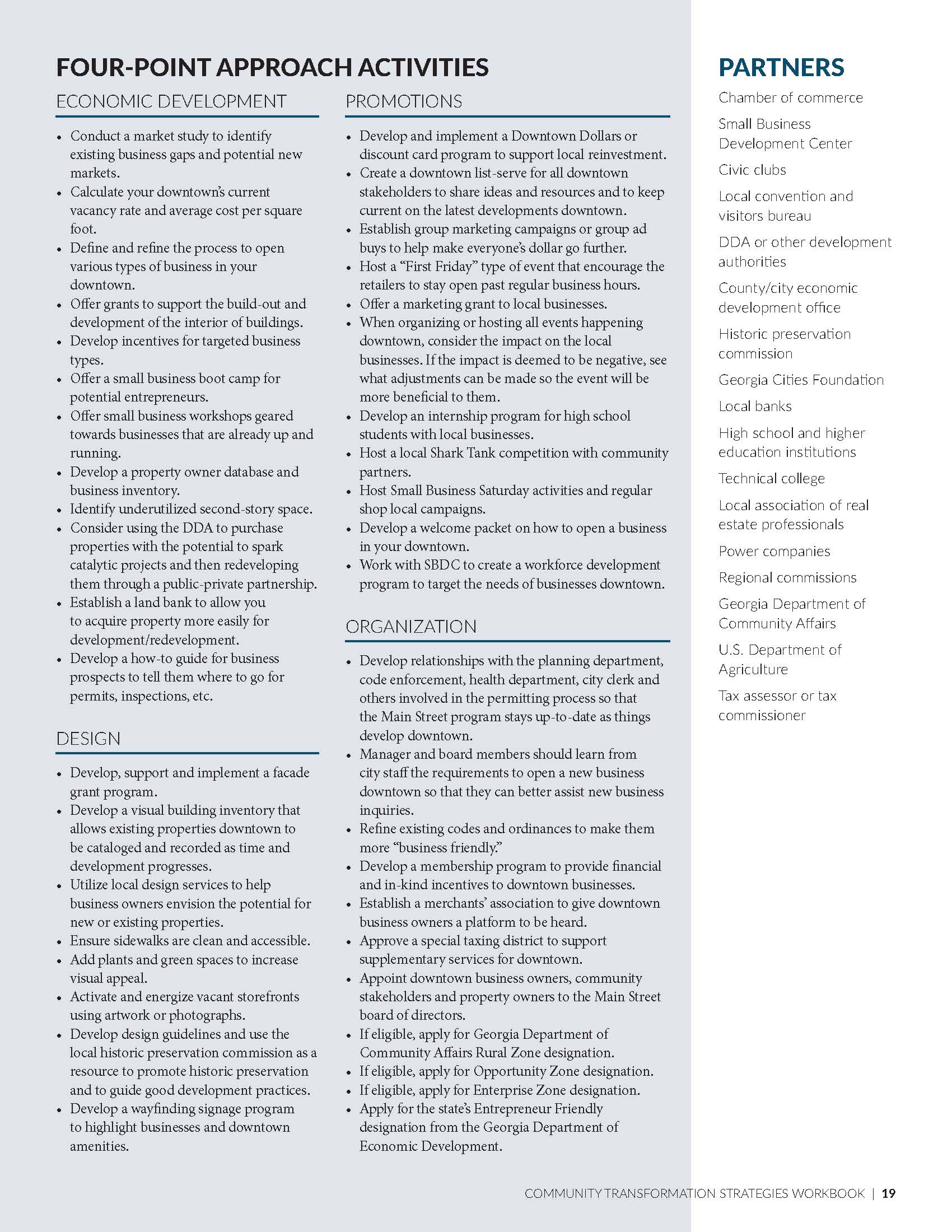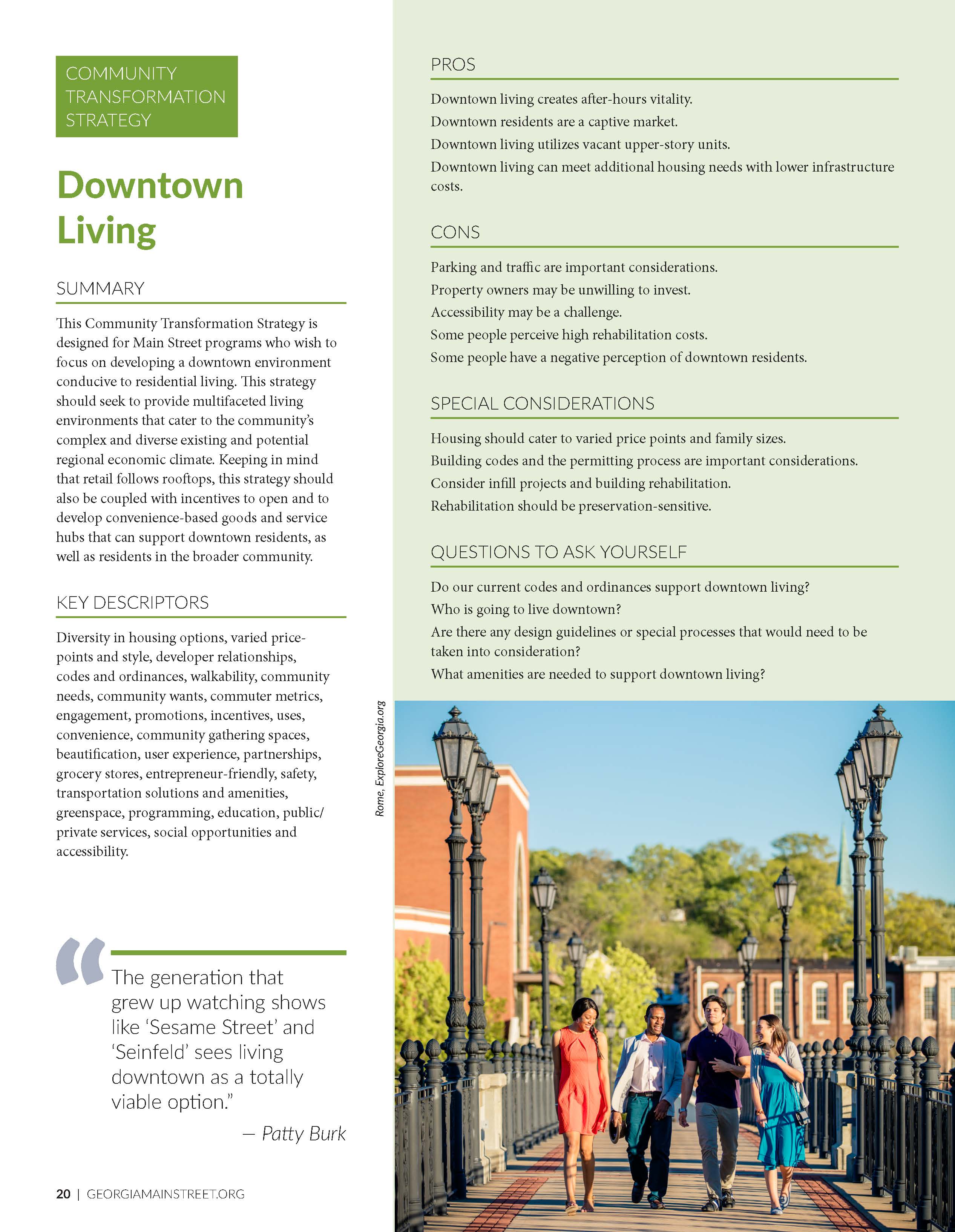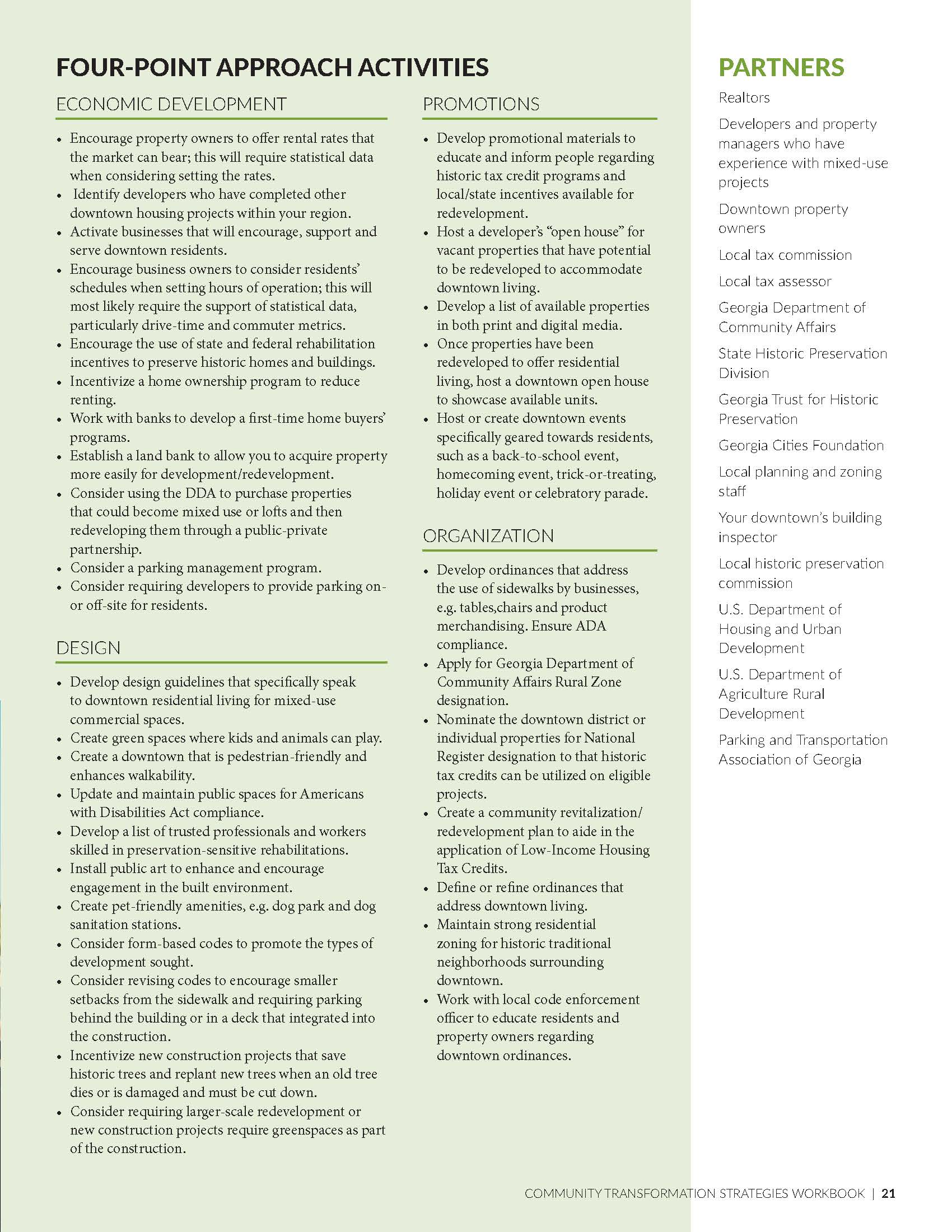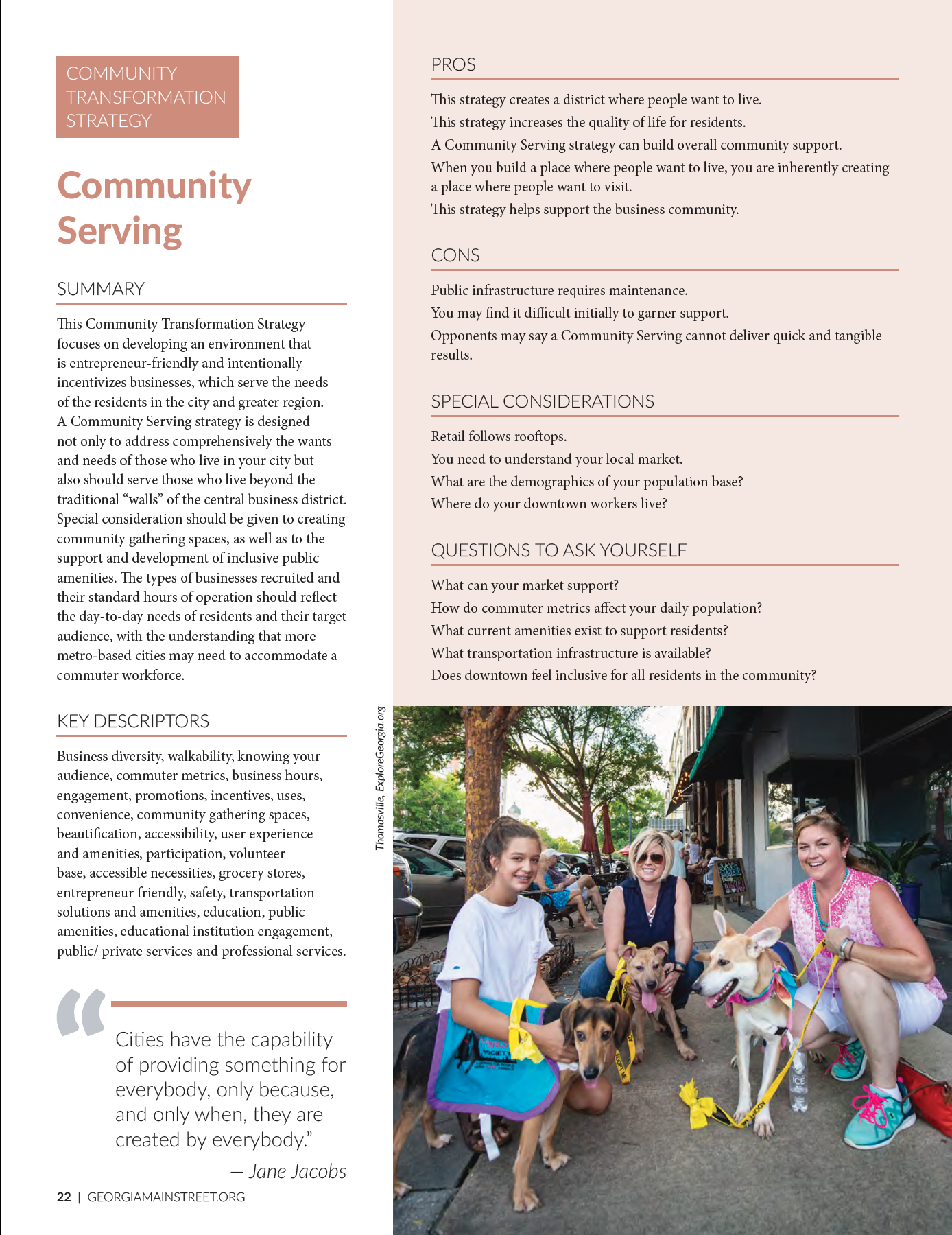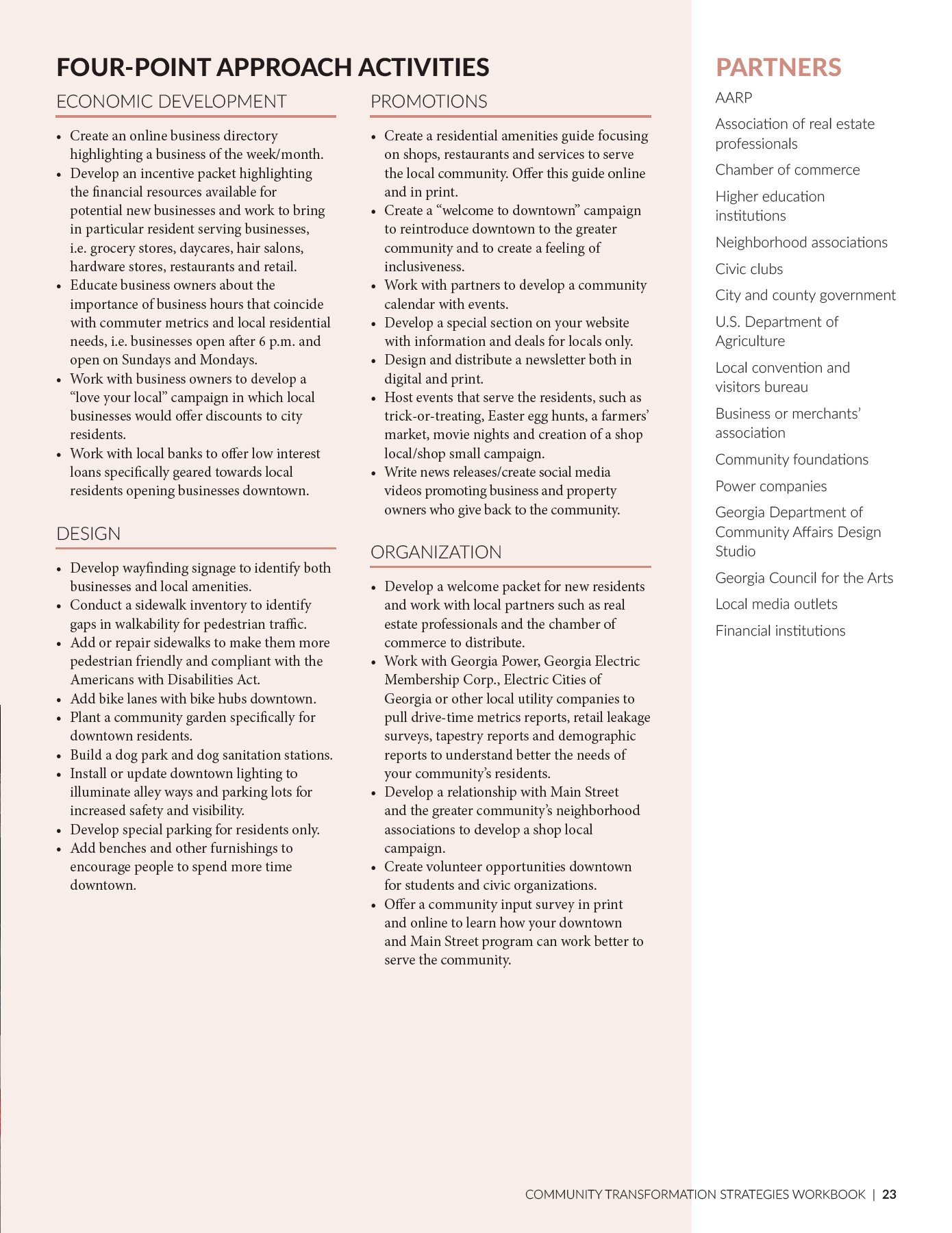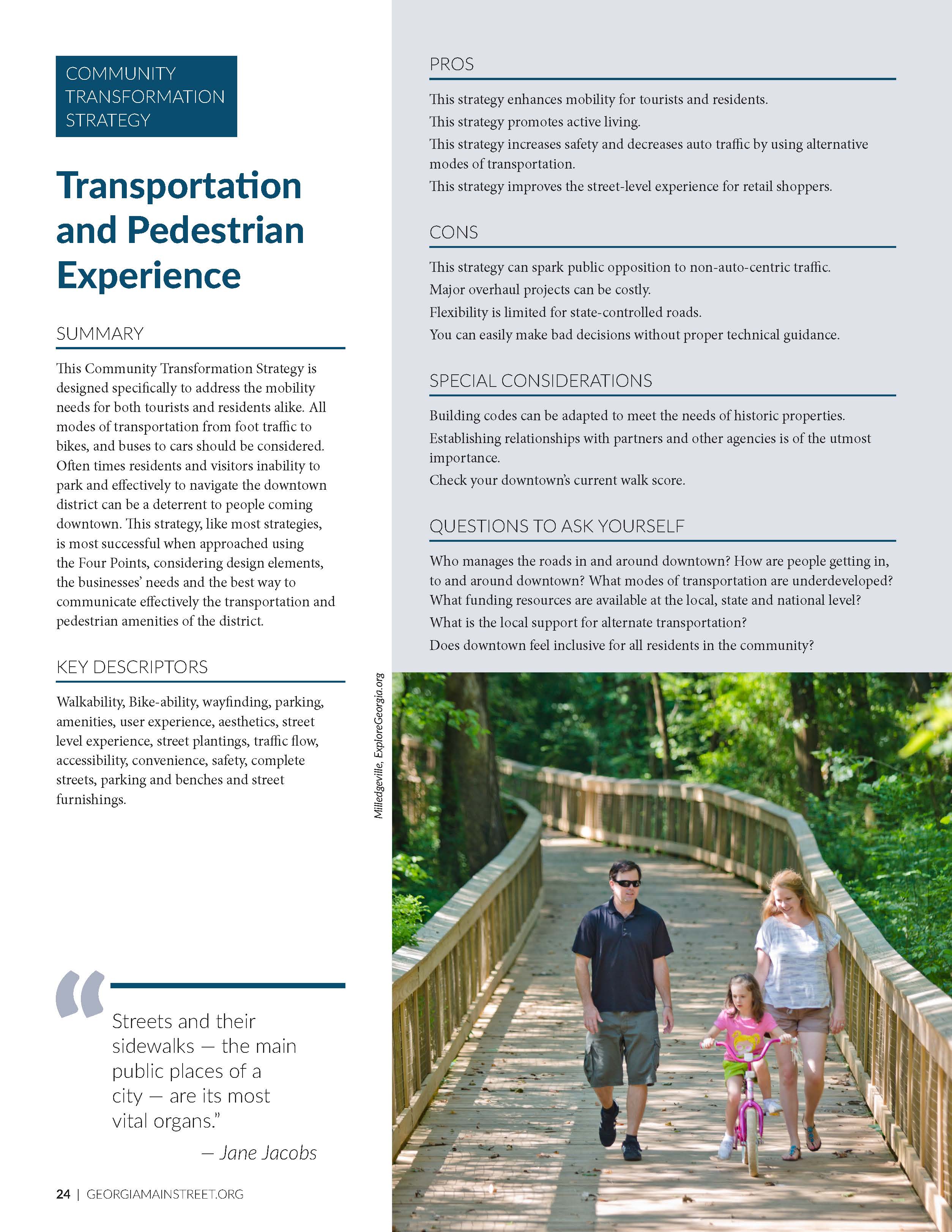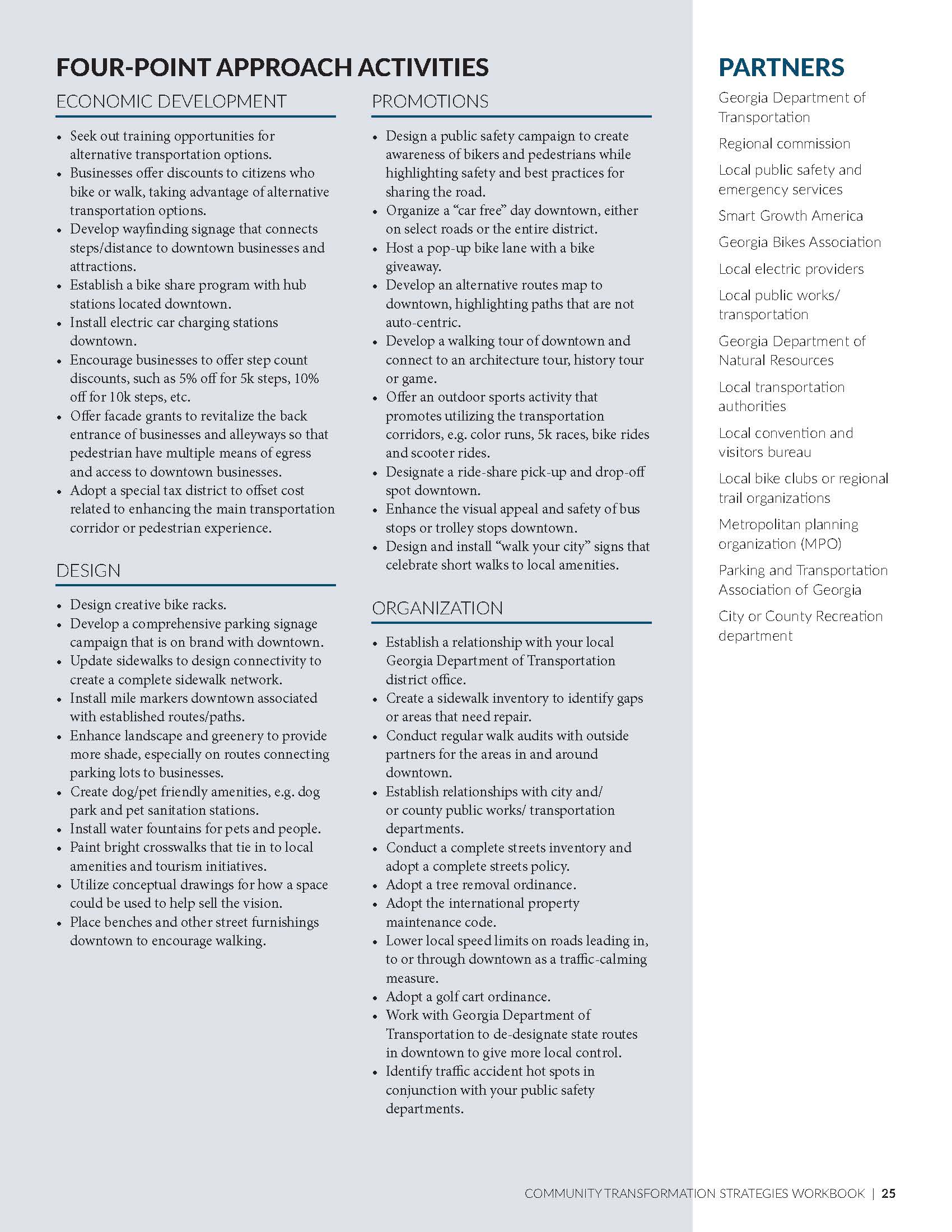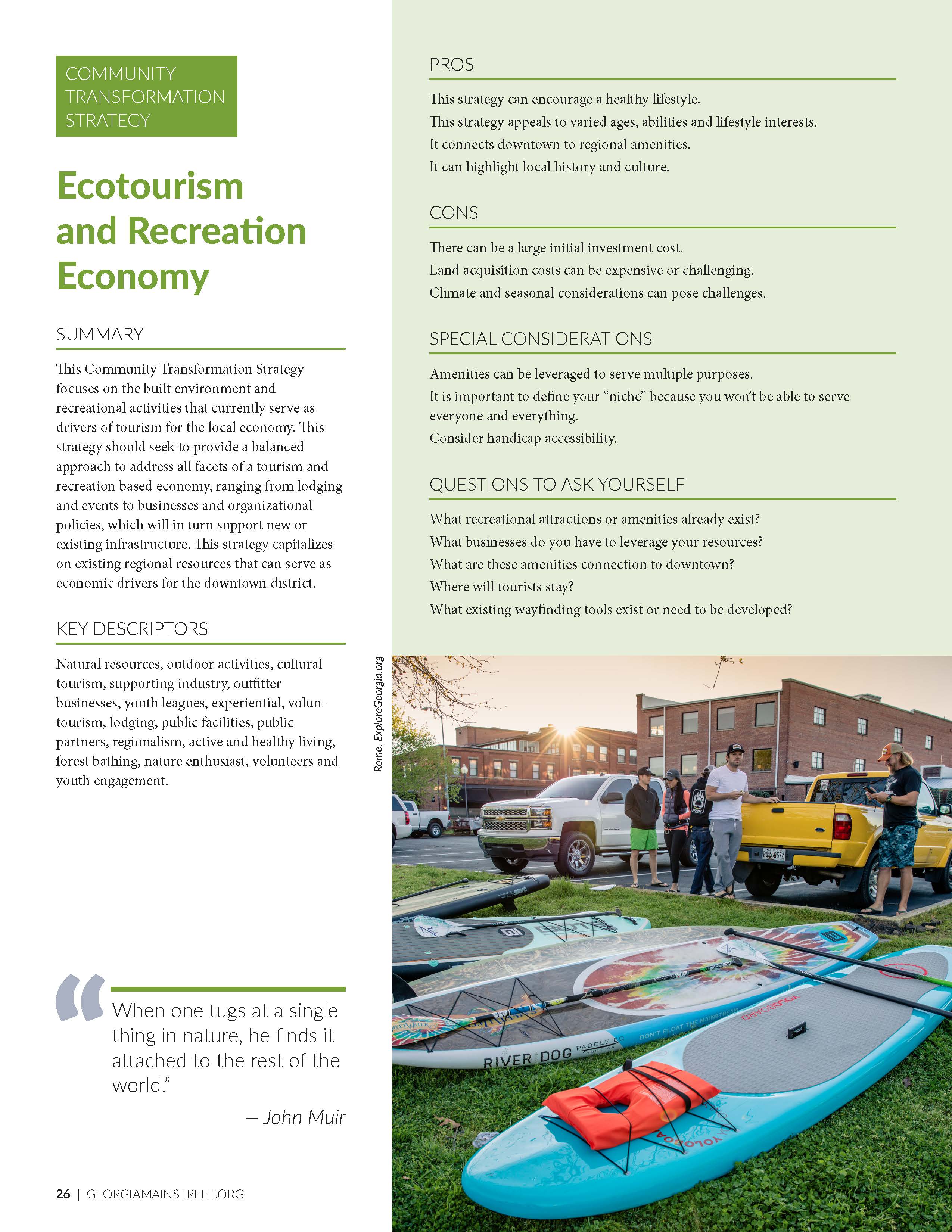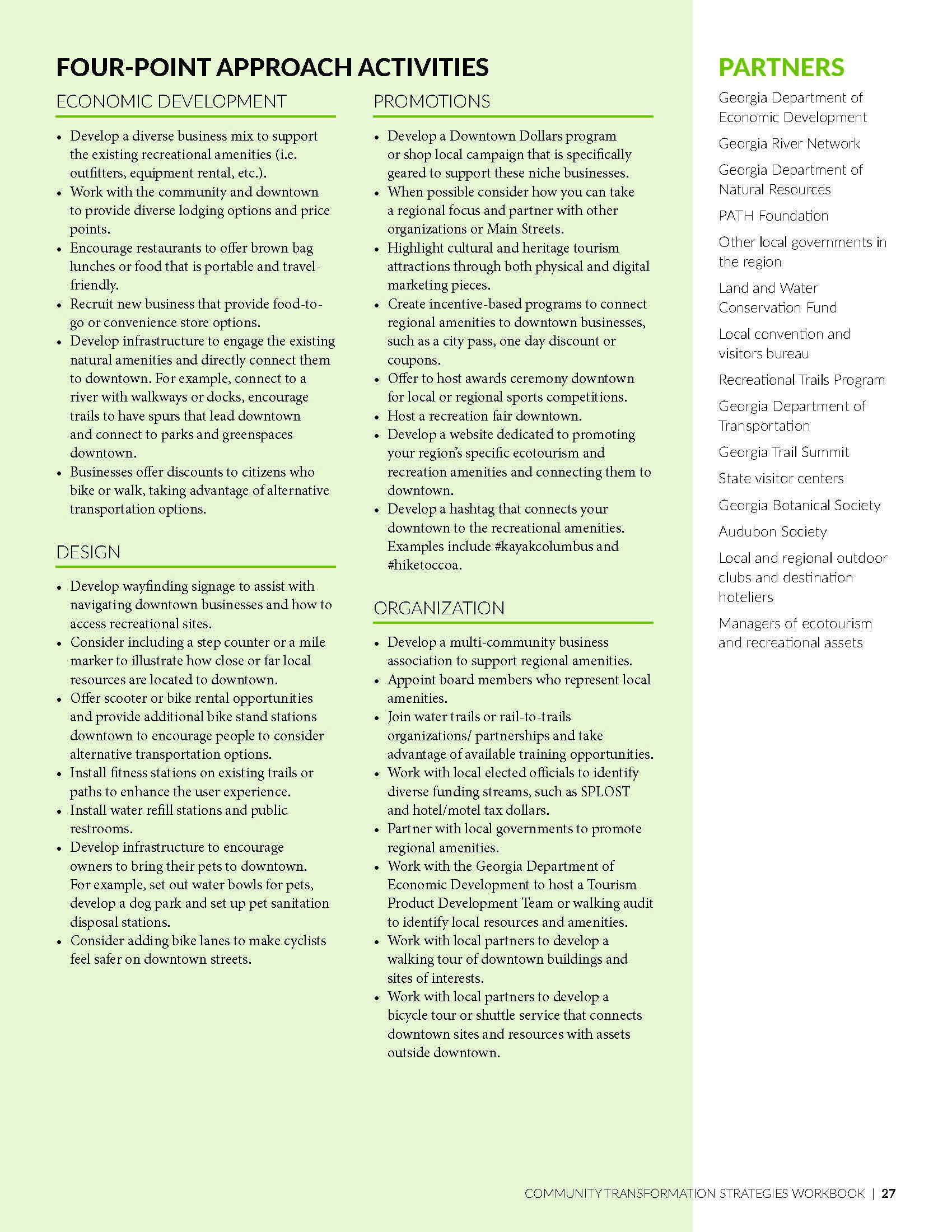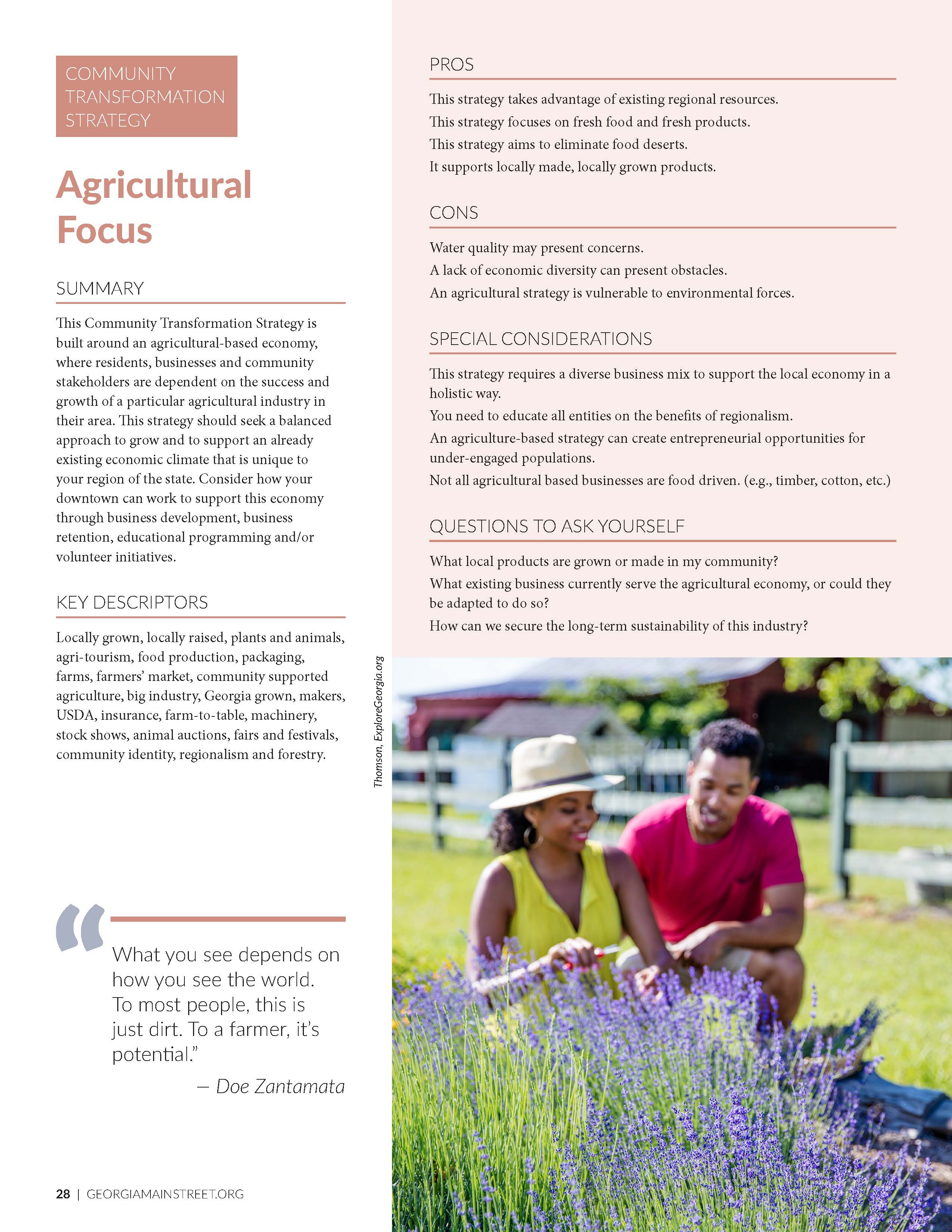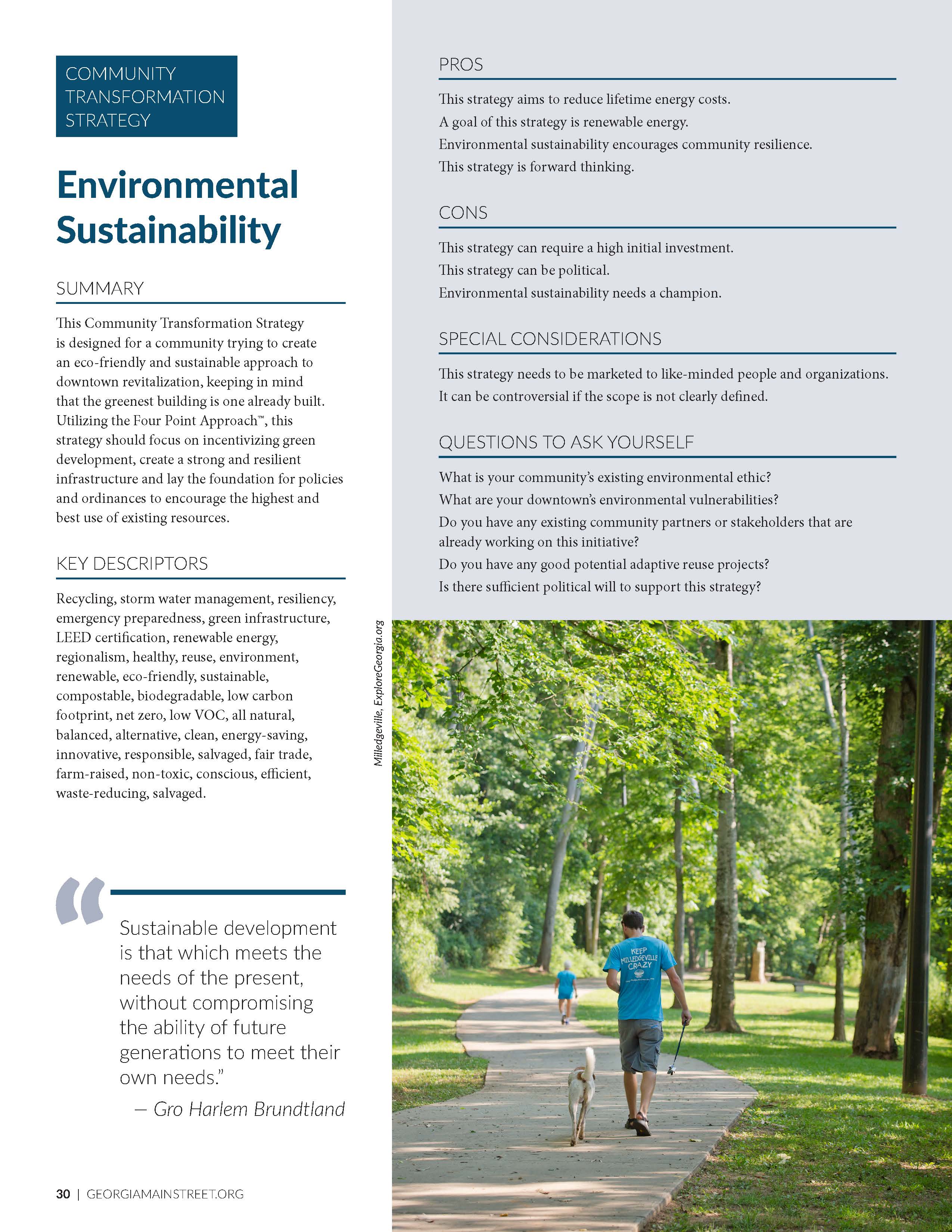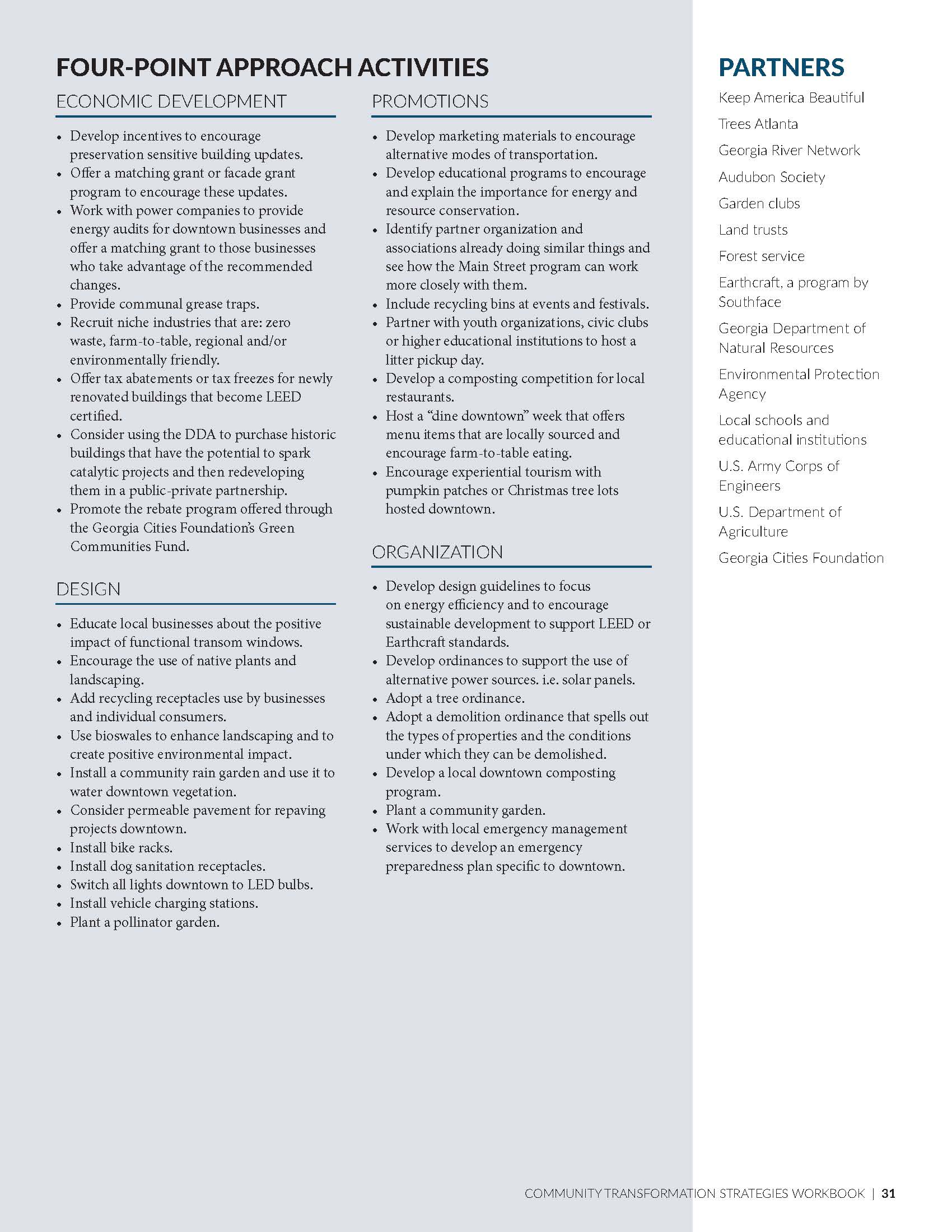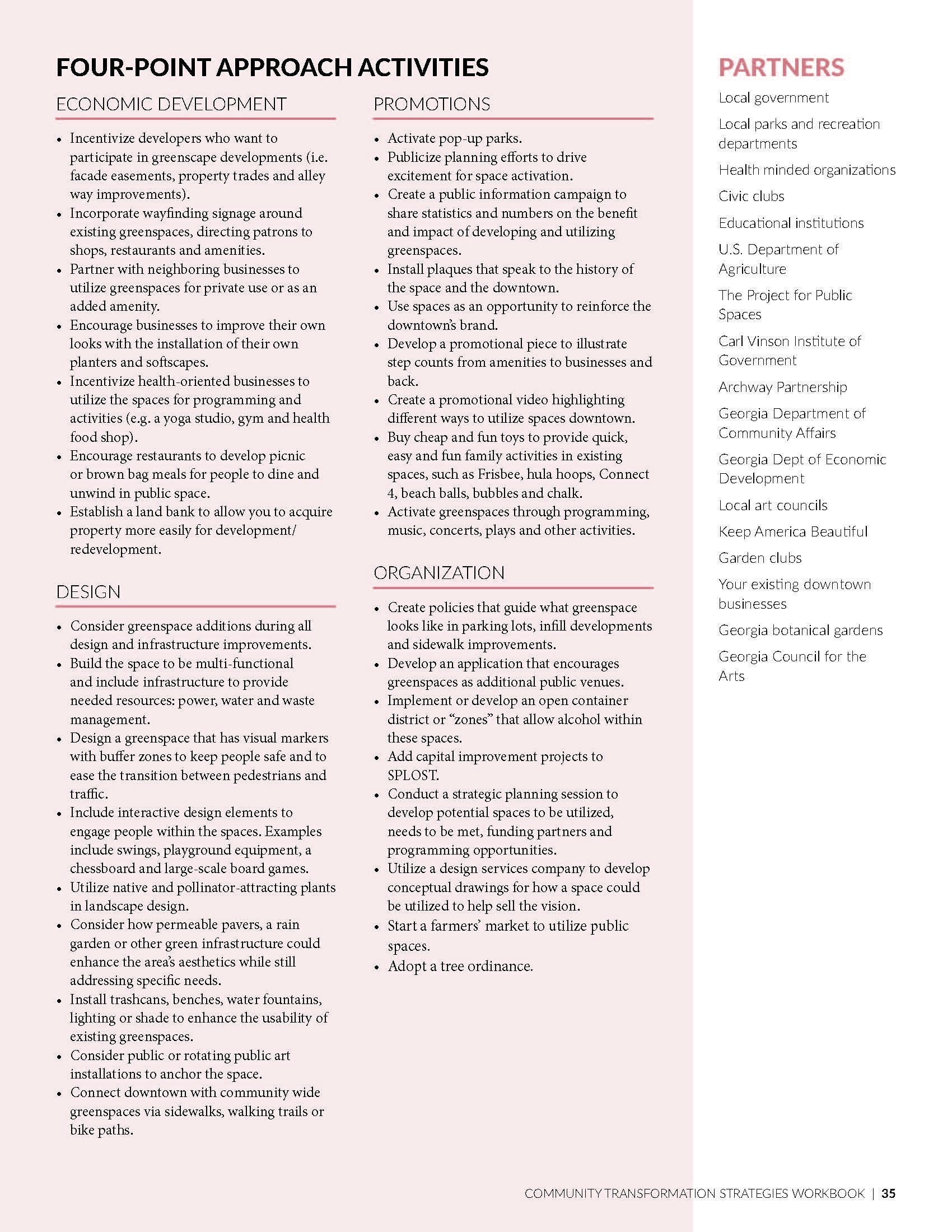Work Plans
It is important for new managers to keep in mind that all designated Georgia Main Street Programs are required to have a work plan on file with the Office of Downtown Development. Work plans serve as an important tool to help guide the projects and scope of work for the Main Street program. A well developed work plan should help you focus on what’s important, measure your impact, and create accountability. So much of what happens to revitalize a downtown district originates from this planning process. Having a comprehensive, shared work plan with public buy-in, can help to grow city support and solidify the role the Main Street Program plays in downtown development. Below is an example of how a completed Main Street program work plan should look.
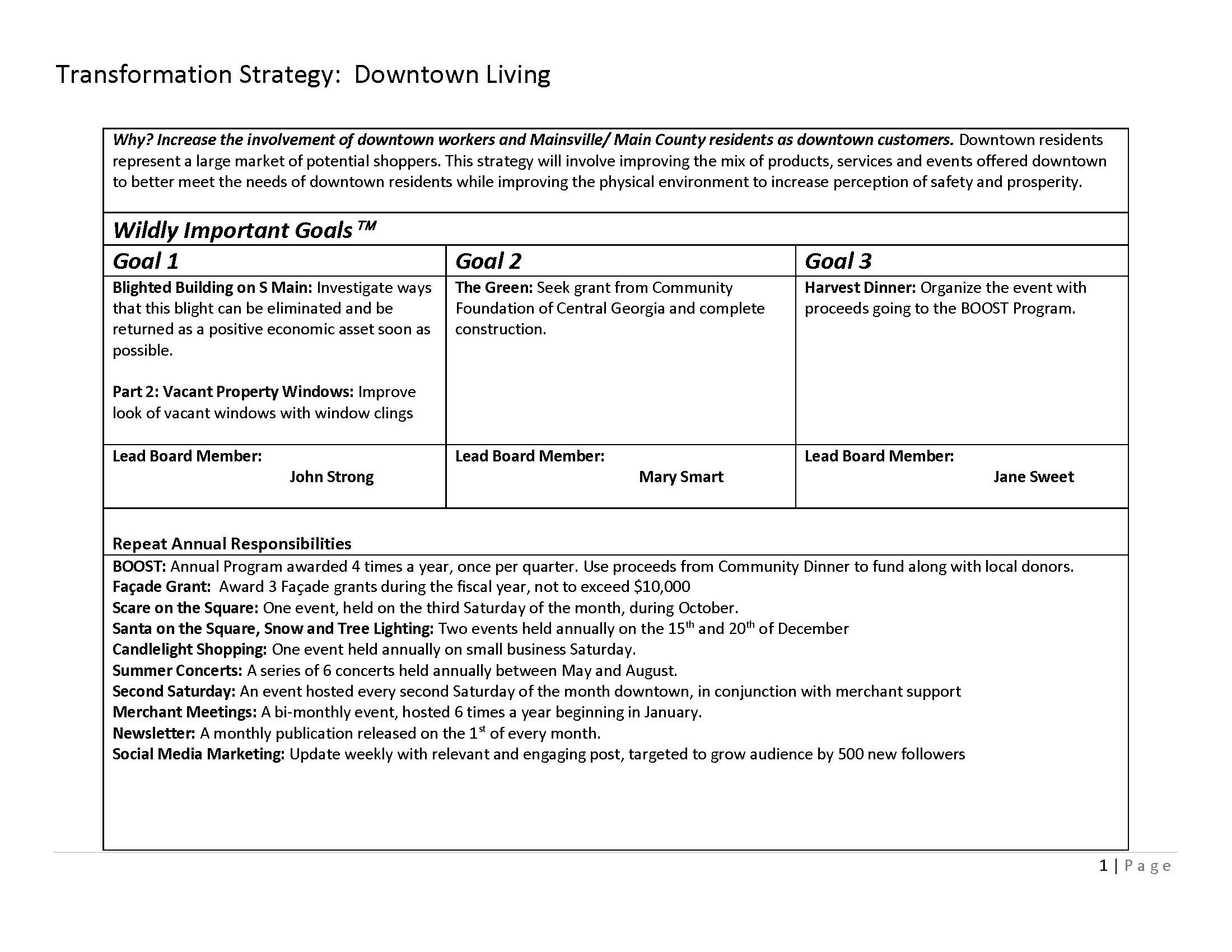
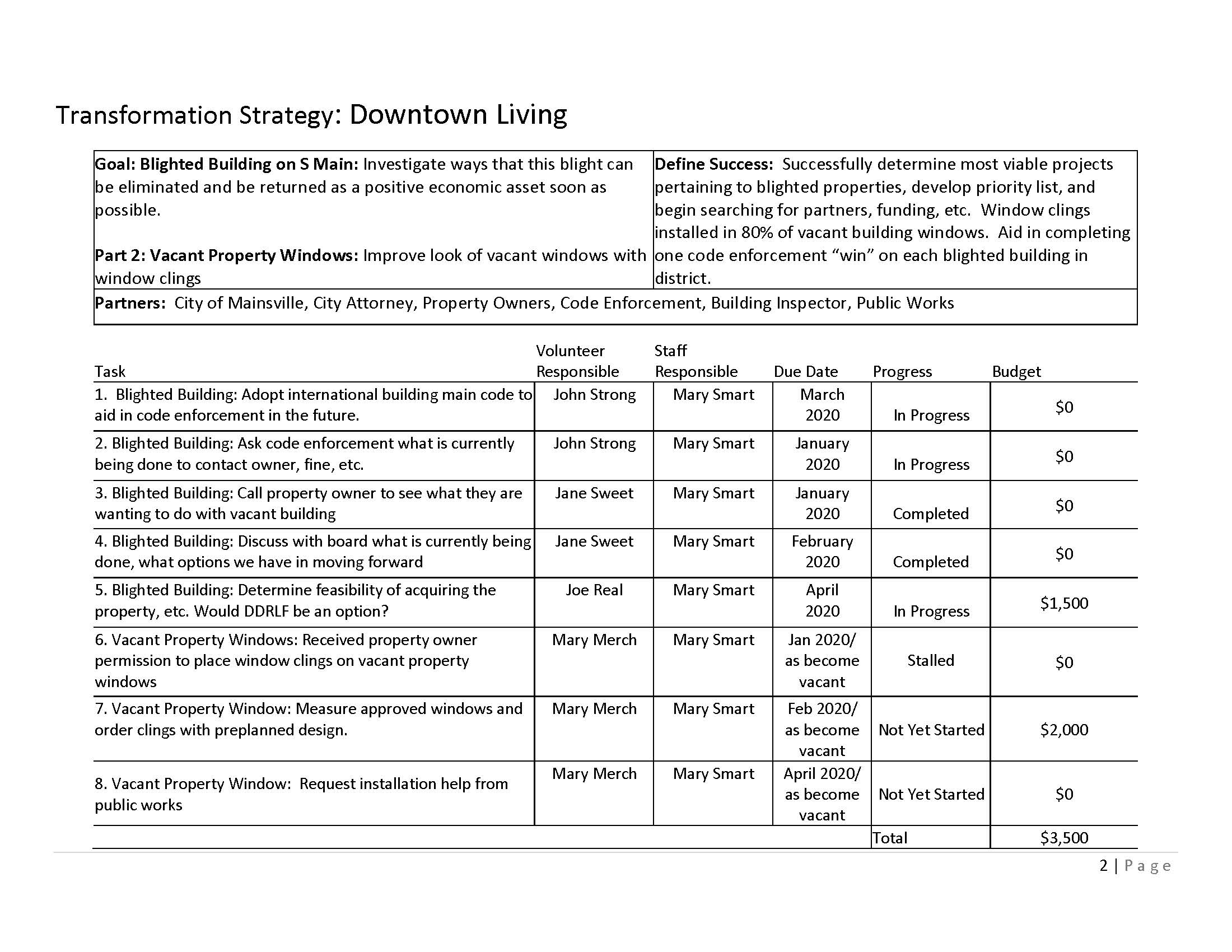
For a blank copy of the available work plan template please click on the download button below.

